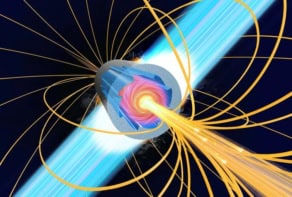
From additive 3D printing to subtractive ablative eye surgery, laser patterning is a versatile and widely used tool. Using laser pulses just femtoseconds long can increase the precision but this also leads to nonlinear processes that are little understood dominating the patterning mechanism. As a result, it can be difficult to optimize the parameters. To make things harder still, nonlinear processes can mean small changes in the patterning parameters have a large effect on the final structure. Now Ben Mills and colleagues at the University of Southampton in the UK have found a way round tackling the nonlinear physics by training a convolutional neural network (CNN).
“It is important to realise that here the CNN identifies the experimental parameters purely via pattern recognition of images of the laser-machined surfaces, without requiring any understanding of the underlying physics,“ they report. Having demonstrated the accuracy of the CNNs for identifying parameters from images of patterned substrates, the researchers suggest the CNN could be used in a feedback loop to identify and adjust the parameters needed to produce a desired structure with greater precision.
Learning not understanding
Neural networks consist of layers of artificial “neurons” – data processing elements – with an input layer, several hidden processing layers and an output layer. As Mills and colleagues explain in their report, each neuron receives a set of weighted inputs from the previous layer, which it processes before passing the result to the next layer of neurons.

Collaborative vision takes photonics into the future
Mills and his team worked with a CNN over other types of neural network because they are particularly adept for pattern recognition, having already found use in language analysis and medical imaging and diagnosis. They trained and tested their CNN on 1800 images from 19 categories defined by substrate material, the number of pulses and the fluence. The substrate could be either silica or nickel, the number of pulses ranged between one and three, and the fluence was taken from a range of over 10 discrete values. They then used images of patterned structures as input and looked at how the accuracy of their CNN for identifying the patterning parameters compared with a random number generator.
As expected for just two possible substrates, the number generator was 50% accurate at getting the right material, but the accuracy plummeted for parameters with wider ranging variables leaving just a 5% accuracy for getting all 3 parameters correct. In comparison the CNN correctly identified whether the material was silica or nickel, the fluence, and the number of pulses with accuracies of 98%, 87%, and 94%, and correctly identified all 3 parameters with an accuracy of 82%.
“This approach could be a central component of a visual-based real-time closed loop feedback system for laser machining,” conclude the researchers. “With suitable training data, we anticipate that this approach could also be adapted to ensure the correct fabrication of a specific pattern or structure, where the desired pattern or structure is used as an input to the process.”
Full details are reported in the first issue of Journal of Physics: Photonics.



